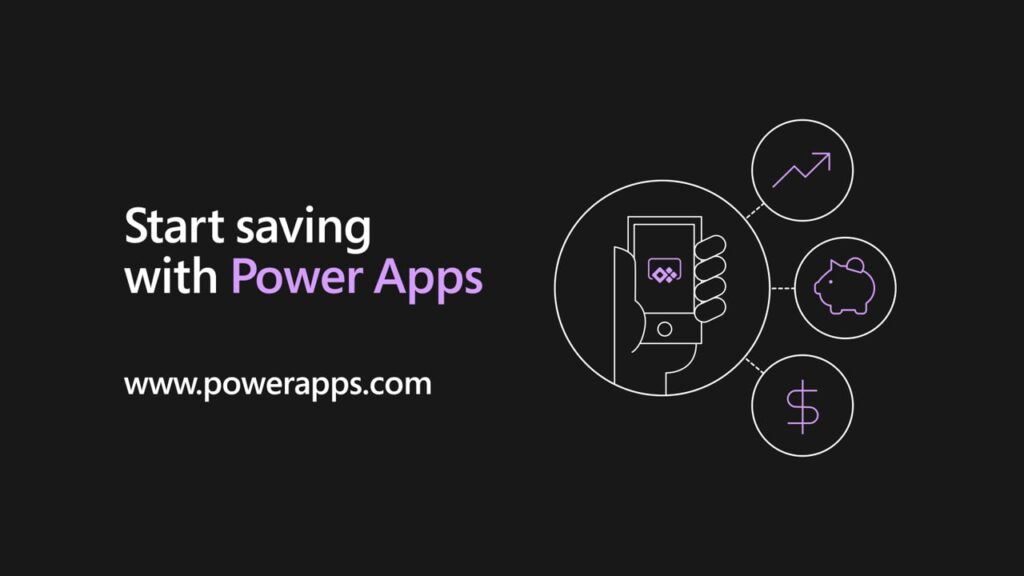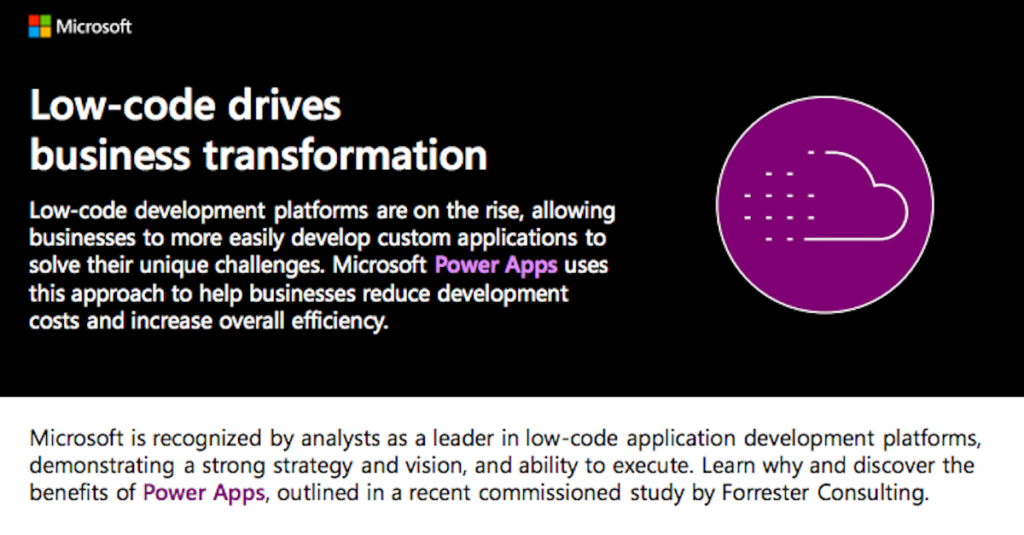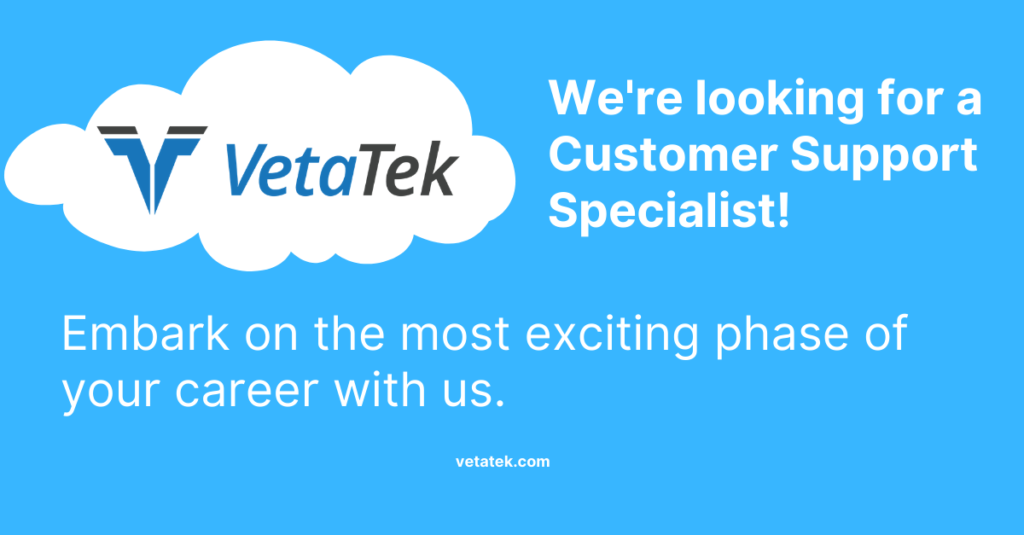When a midwestern retail chain wanted to improve the performance and scalability of inventory and POS systems, it turned to Microsoft Dynamics 365 Business Central. With a Business Central-driven ERP and POS, the company has been able to optimize accounting, warehouse and retail operations. Get the story.
VetaTek

Ullman Dynamics’s migration to Microsoft Dynamics 365 Business Central
Explore how Ullman Dynamics, the world leader in suspension seats, is transforming their business by migrating to Microsoft Dynamics 365 Business Central and the cloud.

Three ways to take cloud-based ERP to the next level
In today’s business environment, enterprise resource planning (ERP) systems are crucial—especially in a post-COVID world, where meetings are more often streamed, and work is conducted from home. By bringing together functions such as financial management, operations, manufacturing, reporting and analytics, and human resources, ERPs enable companies to be run remotely while maintaining security and driving cost efficiency.
Learn how to take your cloud-based ERP to the next level while expanding the flexibility and adaptability of your business.

Microsoft Dynamics 365 Business Central overview
The business landscape is changing, and you need a system that allows for change. To stay on top in your industry, it’s essential to be prepared to take on anything that comes your way, including meeting customers’ needs.
Successful SMBs are embracing digitalization with Microsoft Dynamics 365 Business Central. Powered by the cloud, data, and business intelligence, it lets you unify assets in a single location to help you adapt faster, work smarter, and perform better. Business Central gives you flexible deployment options and innovative solutions that grow with your business for limitless possibilities and potential.

Build applications without breaking the bank
This brief video shows how Microsoft Power Apps can engage employees, improve efficiencies, and solve unique business challenges, all while saving money. Cut down on maintenance costs with the fully managed platform and discover the impressive ROI numbers for further savings.

Low-code drives business transformation
This infographic shows how Microsoft Power Apps uses low code to help you save money and time for your business. See why Forrester named Microsoft a leader in low-code development platforms, and discover the benefits of Power Apps here.
How to Choose a Mobile Computer to use with Business Central
The first barcode was introduced on June 26, 1974. A 10-pack of Wrigley’s Juicy Fruit chewing gum was scanned at 8:01 am at a Marsh supermarket in Troy, Ohio. Since then, the use of barcodes has exploded and can be found almost anywhere and on virtually any product. As barcodes have evolved, so has the hardware used to scan barcodes. In this article, we will help simplify the task of choosing a mobile computer (also known as barcode scanners and mobile devices) to scan barcodes.
If you’ve ever looked closely at a mobile computer datasheet, you’ll likely see up to 40 different specifications listed. Forget those, for now. Here is what you should focus on:
Five Primary Decision Factors
- Ruggedness
- Scan Range
- Camera
- Form Factor
- Price
1. Ruggedness: In what type of environment will the device be used?
In what type of environment are you working? Is the environment dusty? Wet or humid? Cold? Is there potential for the device to be dropped from 4 feet? 10 feet?
Based on the environment, there are two main factors to consider:
Drop resistance: Nearly all mobile devices will have a drop spec. The higher the drop spec, the more rugged the device. For someone working in a clean, retail environment with carpet flooring, a 4′ drop spec may suffice. A busy warehouse with forklifts and ladders to reach pallet racking, a 10′ drop spec may be more suitable.
IP rating: The IP rating, or Ingress Protection Code, is a standard that rates the degree of protection a mobile device case provides. If you’re working in a clean, non-rugged environment, an IP rating likely will not be a factor. In cases where dust, moisture, freezing temperatures, and other elements are present, you’ll want to consider the IP rating. Some of the common IP ratings include:
- IP54: Partially protected against dust and splashing water
- IP65: Protected against dust and water spray
- IP67: Protected against dust and water immersion for a limited time
- IP68: Protected against dust and water immersion for continuous submersion
2. Scan Range: How far away is the barcode you need to scan?
Depending on the manufacturer of a mobile computer, the scan range terminology may vary. There are three primary ranges when it comes to scanning:
- Standard-range: The scanner will scan a barcode close to a few inches and up to 30 inches away.
- Mid-range: A mid-range scanner will scan up to three or 15 feet away, depending on the model. These types of scanners are sometimes referred to as flex-range.
- Long-range: A long-range scanner can scan as far as 50 to 70 feet. These types of scanners are sometimes referred to as extended-range.
The scan range you require will, again, depend on your environment. If you are on a forklift and scanning boxes placed high up on pallet racking, then a long-range scanner may be required. If you’re working retail where everything is within close range, then a standard-range scanner may suffice.
Keep in mind that while the ability to scan at different distances is dependent on the scan engine of a device, the size of the barcode also plays a factor. You should not expect to scan a 1″ square 2D barcode placed 70 feet away with a long-range scanner. The size and lighting conditions of a barcode will play a factor.
3. Camera: Do you need to take pictures?
Often when a mobile device is used in shipping and receiving, a built-in camera comes in handy for documenting damaged shipments, packages ready for shipping as well as documents. Not all devices offer a camera option, and so if a camera is essential to you, you’ll want to begin filtering on devices that provide a camera option.
4. Form Factor: What style of device best suits your needs?
When we talk about “form factor,” we refer to a mobile device’s physical properties. For example, “form factor” may be a physical keypad, a built-in pistol-grip, or a wearable device that can strap to your wrist. There are several options available; however, the most common options are:
- Physical keypad: A physical keypad, versus an on-screen keyboard, is more glove-friendly. Often physical keypads will come in different layouts, for example, a 29-key numeric, 38-key numeric/function, or 47-key alphanumeric.
- Pistol-Grip or Handheld: For non-stop, daily scanning, a device equipped with a pistol grip, or gun, tends to be more ergonomic. For more casual scanning, users may prefer a handheld version. Handhelds are also referred to as bricks or straight-shooters. Not all mobile devices offer a pistol grip. For those devices that offer a pistol grip, the handle may be built-in, where others offer a bolt-on or slip-on option.


5. Price: How much do you want to spend?
When it comes to mobile computers, typically, you get what you pay for. The more rugged the device, the more features it has, the higher the price. Be willing to pay for the features you need. Getting a proper device will make a difference versus buying a cheaper device lacking the options you need. If you don’t need specific options, don’t get them, and the price will reflect that.
Secondary Decision Factors
So, we have covered off the five primary factors when choosing a mobile device. There are some secondary factors to consider as well, and these are:
- 1D (Linear) or 2D (Data Matrix) Barcodes: Do you need to scan 1D, 2D, or both 1D and 2D barcodes? Check the specs of the device you choose to ensure the scan engine can handle the type of barcode you need to scan.
- Mobile Data Support: Will wifi communication suffice, or do you need mobile data support? Some mobile computers offer SIM card options. If this is important, check the device specifications to ensure mobile data is supported.
- Accessories: Available accessories will vary based on device models. Accessories may include holsters, extended batteries, multi-device charging stations, forklift mounts, rubber boots, and more. Check to see what is available for the device you are considering.
- CPU/Memory/Storage: The performance specifications of a device typically isn’t something to worry about too much. Most devices today offer plenty of CPU horsepower, ram, and storage memory. Unless you have specific requirements, performance specifications will meet 99% of the user’s needs.
- Charging Accessories: A method to charge a mobile device typically needs to be purchased separately. For some mobile computers, charging accessories are limited, so the choice is simple. There can be several options for other models, including single or multi-battery chargers, single-unit docking stations, multi-unit docking stations, and more. Furthermore, charging stations will need a power supply and cables, which are often sold separately. Make sure you select all pieces required when choosing a charging option for your mobile device.
A Word About Operating Systems
In 2018 Microsoft announced the end-of-life of their Windows operating system for mobile devices. Therefore, the Microsoft Windows CE and Embedded Handheld options are slowly phasing out and is being replaced by Android. Unless you are already running Windows devices and want to continue so that all devices are the same, there is no good reason to go with Microsoft Windows. Choosing Android will help future-proof your investment in mobile devices. As for Apple iOS, the operating system doesn’t exist for mainstream, commercial mobile devices.
What is Mobile Device Management (MDM)?
Mobile Device Management, known as MDM, enables IT administrators to control, secure, and enforce policies across mobile devices by using software. There are many MDM options available, both available from device manufacturers and third parties. An in-depth discussion is out of scope for this article. MDM is not for everyone. For those looking to lock down devices to prevent users from performing specific actions, there are third-party apps like SureLock and SureFox available.
Should you Consider a Comprehensive Service Plan?
Major mobile device manufacturers offer extended service plans for the devices you purchase. While devices typically come with some warranty, driving over a device with a forklift or dropping it in a bucket of chemicals isn’t covered. Depending on the ruggedness of your environment, an extended service plan can be a good idea. Depending on the service plan, damaged devices are replaced, worn batteries are replaced, and damage is repaired. Common extended service plans range from three to five years, and turnaround times vary from the next day to up to five days or more.
Don’t instantly dismiss an extended service plan when buying a device. While the cost for a service plan can add 15% to 25% to the cost of a device, it can help reduce the overall total cost of ownership.
Who are the manufacturers?
There are a lot of mobile computers on the market. The three big manufacturers are Datalogic, Honeywell (Intermec), and Zebra(Motorola & Symbol). Each manufacturer offers several different models of mobile devices, with each model available with different options.
The choices can be overwhelming, hence the purpose of this article. While you can reach out to vendors for assistance, you must do your homework and know the features you need and how the device will be used. A vendor can provide guidance, but the onus is on you to decide what will work best for you.

Why not just use a consumer-grade smartphone?
Why not wear running shoes to climb Mount Everest? Matching the proper tool to the task at hand typically yields the best results. Consumer-grade smartphones don’t use scan engines. Instead, the built-in camera is used to read barcodes. Smartphone cameras are not efficient when it comes to reading barcodes. The cameras can be slow compared to a scan engine, users typically need to be within about 12 inches to read a barcode, and reading off-axis, dirty, or damaged barcodes becomes a challenge.
Smartphones will not be as rugged as a purpose-built mobile device, and this can often end in a higher total cost of ownership when devices get damaged and need replacement.
For those that need to scan all day long, the ergonomics and scanning performance of a mobile device will out-perform a consumer-grade smartphone – hands down.
What Warehouse Management System (WMS) apps are available for mobile computers?

Just like there are lots of mobile device options, so is the selection of WMS apps. Discussing and reviewing available apps is outside the scope of this article; however, for those using Dynamics 365 Business Central, here are a couple of options to consider:
WMS Express: WMS Express from Insight Works is a free add-on for Microsoft Dynamics 365 Business Central Cloud that brings mobile device integration to the warehouse setting. This means you can save a lot of time while increasing accuracy by scanning barcodes to manage different warehouse operations. Learn more at www.WMSExpress.com.
Warehouse Insight: Warehouse Insight is an add-on for Microsoft Dynamics 365 Business Central that provides warehouse and production employees full access to Dynamics 365 Business Central via barcode scanners handheld computers. Warehouse Insight streamlines inventory and warehouse functionality to provide intuitive warehousing tools for inventory counts, shipping, receiving, picks, putaways, bin management, and more. Learn more at www.WMSforDynamics.com.
Where to procure mobile devices?
Searching online for vendors of mobile computers is a good place to start. You will want to visit this online store for those working in distribution or manufacturing and are using or considering using Microsoft Dynamics 365 Business Central.
Get started and shop online today
If you have read this article, consider yourself educated when it comes to selecting a mobile device. Consider sharing this article with others. Now it’s time to go shopping. To get started, check out this device comparison table. The table provides a good overview of the different mobile devices that work well with Dynamics 365 Business Central.

Wild & Wolf replaces legacy systems with Microsoft Dynamics 365 Business Central

Ullman Dynamics’s migration to Microsoft Dynamics 365 Business Central
Explore how Ullman Dynamics, the world leader in suspension seats, is transforming their business by migrating to Microsoft Dynamics 365 Business Central and the cloud.
Customer Support Specialist

About You
You pride yourself on your ability to communicate in all forms. You have an enthusiastic spirit, excel at phone and written communication, and can maintain a consistently high-level of engagement.
You have a desire to pursue a career in the technology field and are open to learning new business systems and software applications.
You are skilled at resolving problems.
You understand and believe customer service is a top priority that should show in how you communicate as well as the work you take on.
You are searching for a dynamic, interesting, flexible position where you can grow and work with like-minded individuals.
After it’s all said and done, you have empathy for your clients, a strong desire to help them, the drive to continually learn, and the care to make a difference.
About Your Skills
Communication comes naturally! Since you will be spending most of your time interfacing with customers, you should feel comfortable and confident both on the phone and with written communication over multiple mediums.
As a customer support specialist your attitude is contagious. It’s critical that you ensure customers leave any interaction feeling positive and encouraged. Further, that same level of excitement is important to carry during internal interactions with the team. You understand the weight and meaning of how you communicate is as important as what you communicate. You should be a leader and champion of a positive, can-do attitude. Finally, you should always have the patience and stamina to maintain that level of energy.
Throughout all engagements with customers you will also need to deliver results in the form of technical problem solving. You should have a strong desire to pursue a career in technology and become adept at navigating the business applications we support. Solving a customer’s problem in a timely manner through excellent communication is the primary goal.
A necessary skill for this role is reliability and accountability. We strive to provide real value to all our customers; following up on communication and delivering solutions is critical to that end. That skill, to maintain end to end follow through and consistent communication, is the by-product of each interaction and step along the way to resolution. You also must have the capability to hold your team members accountable when assisting our support efforts.
About the Job
We’re looking to add a team member centered around our support of Microsoft Cloud Services in the Microsoft 365 / Azure and Dynamics spaces. More specifically, we need someone who is excited about learning cloud technologies and delivering first in class customer service. Our team leverages superior problem-solving skills, delivered with fantastic communication to ensure we deliver real value to our customers. Above all, we strive to provide the best customer service possible.
Some of your responsibilities would include:
- Supporting clients who have implemented Microsoft 365 / Azure and Dynamics services.
- Triaging support cases and answer / resolve customer questions and issues.
- Collecting required information to escalate to other experienced team members as needed.
- Create and maintain a rich knowledge base items along with training content for our systems.
- Assist and preform training for users based on documentation as part of support, AdHoc requests, or implementation projects
- Meeting high expectations for communication and customer service
- Troubleshooting technical problems within those business applications and services
At VetaTek, we understand why a traditional nine-to-five office desk job seems unappealing – we also understand the challenges of a lifestyle without one.
By opening doors to a variety of clients with unique projects, we can offer the flexibility and dynamism of a contractor without the shortcomings. In our experience, uninspired and rigid individuals result in poor client relationships and failed projects. Creating an environment that promotes happy team members is a top priority!
Here’s how it works:
- We partner with quality clients who have interesting and targeted business systems
- Schedules are flexible
- We work with cutting-edge technologies, applications, tools and processes
- Everyone on our team shares this culture, in fact, it’s the driving force behind why we do what we do
About VetaTek
As a dynamic startup, we know the best additions to our team are all around intelligent, competent, and eager individuals.
We know that cutting-edge tech and top notch processes aren’t enough to ensure that we deliver on our promise to clients of successful projects and relationships.
Our tight-knit team of professionals is what makes it possible.
They are former standouts in their latest endeavors. They left the old world of bland office space jobs. They’re travelers, family people, or ambitious entrepreneurs. Some are just beginning their growth, while others have already been there and back. Here’s what they have in common:
They are all committed to learning from those around them, improving the team, and ultimately delivering real business value.
If you are interested in a position with VetaTek, fill out the form below to get in touch.



